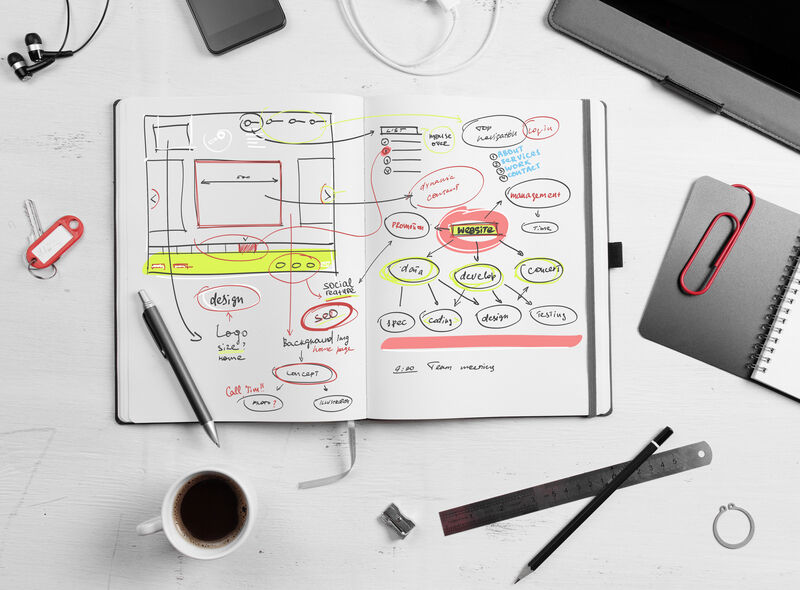
1) Website Architecture
Ensuring your website has good website architecture is crucial for your ecommerce site. It is the very foundations that enable your website to function properly, and without due consideration your website is almost certain to fail. But why? First, we must define ‘website architecture’ to explain what it is exactly, and why it is important to get right.
Website architecture is a term used to refer to the building blocks of the website – the general structure of a website. It is the technical, functional, and visual components of the website that are designed and deployed by a web designer to ensure the website functions as it should for the business and users needs. Have you ever gone on a website and everything just works. It is fast. It is easy to navigate. It looks good. Everything you want from the website is right there. This is due to good website architecture.
But there’s more to it than that. The website can’t just look good and feel good. It has to be safe and secure, especially when dealing with transactions and people’s personal data. This is the sort of techy stuff that can leave websites feeling flat and falling short. When it comes to your customers data and the handling of money, why leave it to chance? Ensure you’re working with a reliable company that you can trust to make your website not only effective, but safe and secure.
2) Navigation
Nobody likes being lost. Whether you’re in a new city, stuck on a country lane, or delving through pages and pages of a website, trying to find the one thing you need. It’s frustrating to say the least. Much in the same way we navigate a new city or country lanes with a map, we navigate websites using navigation tools such as a search bar, a navigation menu, or through embedded links. If your users can’t navigate your ecommerce website with ease it’s going to leave them unfulfilled and unwilling to buy from you… and they won’t be coming back any time soon.
The main navigation function we’ll be focusing on in this blog is the ‘Call To Action’, or CTA for short. The CTA is a crucial function for ecommerce websites, and will be a large factor in converting visitors and making sales. Selling to new customers is a process. A trust-building, informative process that empowers your customer, giving them the confidence to buy from you and not a competitor. As such, your website should act like a funnel.
Let’s look at a simplified example. A CTA will direct visitors to information about your product or service, where it will be your job to convince them they’re making a right decision in buying from you. This is a process, so often the visitor will end up looking at several pages about your company and what you provide, as well as what others think about it. Throughout your website, further CTAs will direct them to the transaction part of your ecommerce website. If your funnel is structured correctly and your website is effective in its trust-building exercise, by the time they’re directed to the shop they’re ready to purchase from you.
Without correctly planning and structuring your CTAs and website funnel, your users might end up feeling lost on your website – which is no good. They’ll just end up choosing a competitor who does a better job at building trust and getting visitors to checkout with confidence.
3) Imagery
If you’ve made it to the 3rd and final section, congratulations. According to Microsoft, the average attention span of humans has dropped to 8 seconds, so you’re doing well having made it this far. The same rule applies to websites. If your website doesn’t immediately grab the attention of the average visitor, they’ll find a competitor that does.
But lucky for you, people are easily pleased – and a good start is imagery. Attractive imagery can do wonders for your website and will keep people entertained and browsing your website for longer. Imagery also helps communicate with your audience. As the saying goes, a picture is worth a thousand words. With clever imagery and graphics you can portray key company messages, personality, and effectively demonstrate your products or services. Of course, you can’t just rely on imagery. And the imagery you choose has to be relevant and high quality. If you populate your website with stock imagery, your website can come across as bland and boring. Compare that with high quality imagery taken of your team in your office, for example. Visitors will recognise familiar faces, and the imagery will better represent your brand and business. So use stock imagery sparingly. (Oh, and if you are plucking imagery for your website from Google Images, be aware of copyright rules – else you might find yourself in a spot of trouble).
Finally, imagery SEO can be invaluable, boosting your search engine performance and attracting new customers to your website.
We hope you found part 1 of Why do some ecommerce websites succeed… and why do some fail? Useful. We’ll be uploading more tips for how to ensure your website is up to scratch and performing at its best, so keep an eye out for new posts.
If you’d like to get in touch with Vertical Plus to discuss how a partnership would help to grow your ecommerce sales, please contact us at info@verticalplus.co.uk